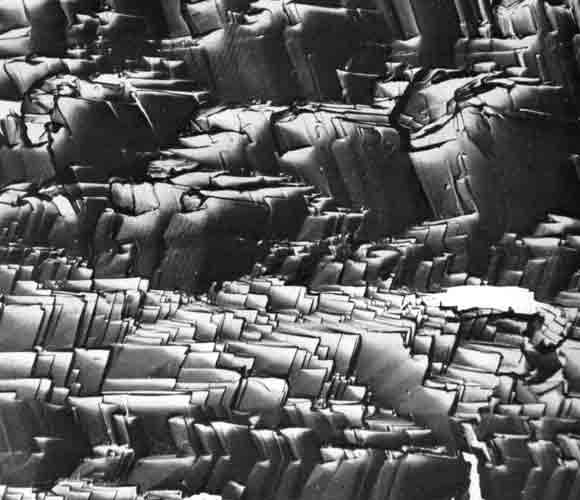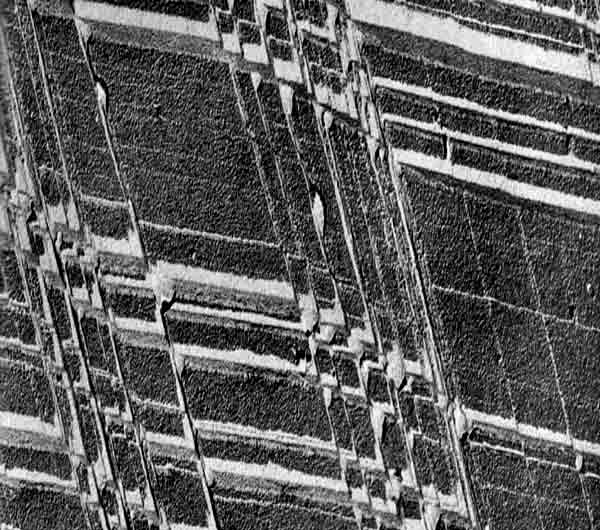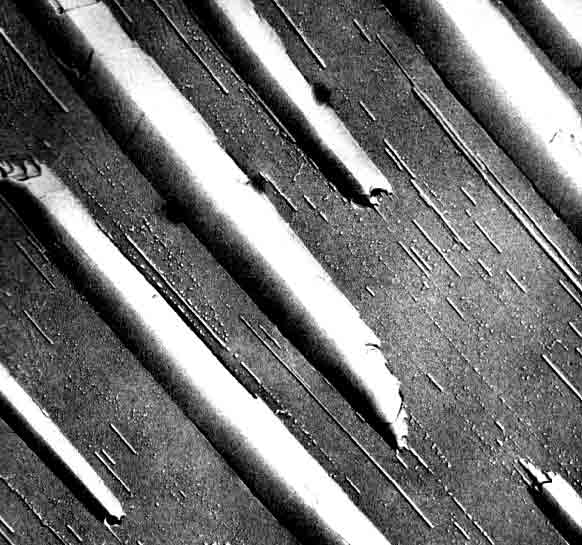Electron scans of metal showing glitch similarities
About five hundred Japanese-made electron microscopes are now in use for all kinds of researches in fundamental as well as applied science to prepare for a new age which will follow the age of the optical microscope and to probe into the microscopic world, and have already made many contributions to these researches.The World through Electron Microscopes - Metals
Pub. Japan Electron Optics Laboratory Co. (1959)
The parallels between the electron scans below and the various computer glitches and raw computer memory visualisations to be found on this site are clear.

The layering in this electron scan closely resembles the screen-redraw glitches we are probably all familiar with - you drag a crashed application window around the desktop and it leaves a trail of overlapping rectangles, the degree of overlapping being determined by how quickly you drag the window.

The striation effect in this scan looks like the effect I get when my graphics card is overloaded, trying to manipulate an image that's too big for it (such as when I deliberately increase the size of an image by 1000000% !).

This scan looks like the effect you might get when converting a region of RAM into grayscale pixels. You can usually find a region that's mostly zeros, except for little streams of nonzero data.